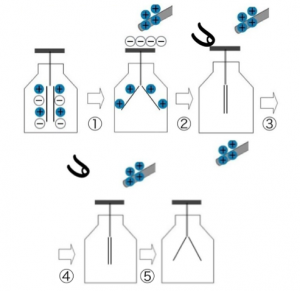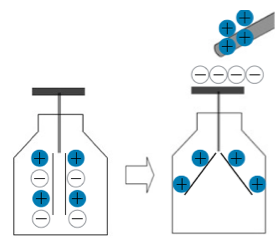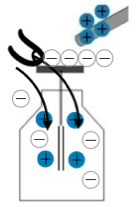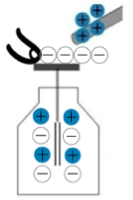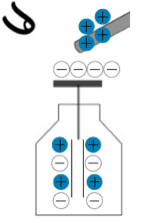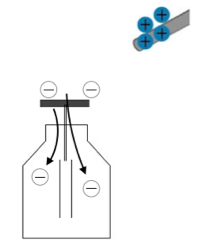Exam Alert! Electrostatic Induction & Grounding Made Easy — 5 Steps with the Gold-Leaf Electroscope
Hi, I’m Ken Kuwako, a science trainer. Every day is an experiment!
The gold-leaf electroscope experiment is a great way to visualize the invisible movements of electricity, but it’s not always easy to wrap your head around, is it? Static electricity is something we’ve all experienced—the crackle when you take off a sweater in elementary school, or making your hair stand on end with a ruler. Yet, it’s hard to accurately imagine how the “electrons,” which are the very essence of electricity, move because you can’t see them.
It’s almost like trying to decipher words written in invisible ink.
But don’t worry! We’ll carefully track the movement of those invisible electrons and demystify the mechanisms of “electrostatic induction” and “grounding”—two key concepts in high school physics. By mastering this experiment, you’ll gain a much deeper understanding of the entire field of electricity! So, let’s take on the challenge and solve the mystery of electricity together.
Problem
As shown in the diagram below, a positively charged glass rod is brought close to the metal plate of a gold-leaf electroscope, causing electrons to move and the leaves to spread apart (②). When a finger touches the metal plate while the rod is still there, the leaves close (③). After the finger is removed (④), the glass rod is taken away (⑤), and the leaves open again. Considering the state of the electrons during this process, draw the electron distribution for diagrams ③ through ⑤.
Answer and Explanation
Inside the metal plate and leaves are a multitude of “free electrons” that can move freely and conduct electricity. As shown in diagram ①, when there is no charge, the electrons are evenly distributed, and the electroscope is electrically neutral (zero charge). In diagram ①, the electron distribution inside the leaves is shown for clarity. When a positively charged glass rod is brought near, the free electrons in the metal plate and leaves are attracted to the rod’s positive charge and move upwards. This is what’s happening from ① to ②.
As a result of the electrons moving to the top, the leaves become relatively positively charged and repel each other, causing them to spread apart. This is why the device is called an “electroscope”—you can tell if an object is charged simply by bringing it near and observing whether the leaves open.
The leaves are held open by electrostatic force, an unstable state that fights against gravity. So what happens when you touch the metal plate with your finger? The human body is also a conductor (a substance that can carry an electric current) and, like the Earth, contains a vast number of free electrons. Since the leaves of the electroscope are positively charged, they attract free electrons from your finger, which flow into the metal plate. This neutralizes the leaves.
Consequently, the leaves lose their repulsive force and close due to gravity. This phenomenon is called “grounding”. The electron distribution for diagram ③ looks like this:
Next, when you remove your finger in step ④, nothing happens because the electroscope is already electrically neutral. The leaves remain closed. The answer for diagram ④ is as follows:
Finally, what happens when you move the charged rod away in step ⑤? The electrons that were gathered at the top of the metal plate by the positive charge of the rod are now released. With nowhere else to go, they scatter throughout the entire electroscope.
As a result, the leaves become negatively charged and repel each other, opening up again. The electron distribution for diagram ⑤ is as follows:
Even though static electricity is invisible, it’s crucial to observe the phenomena by logically considering the movement of free electrons. Every physical phenomenon is connected by a cause and effect. I hope this experiment has sparked your curiosity about the fascinating world of physics.
Please also refer to this experiment for more details.

